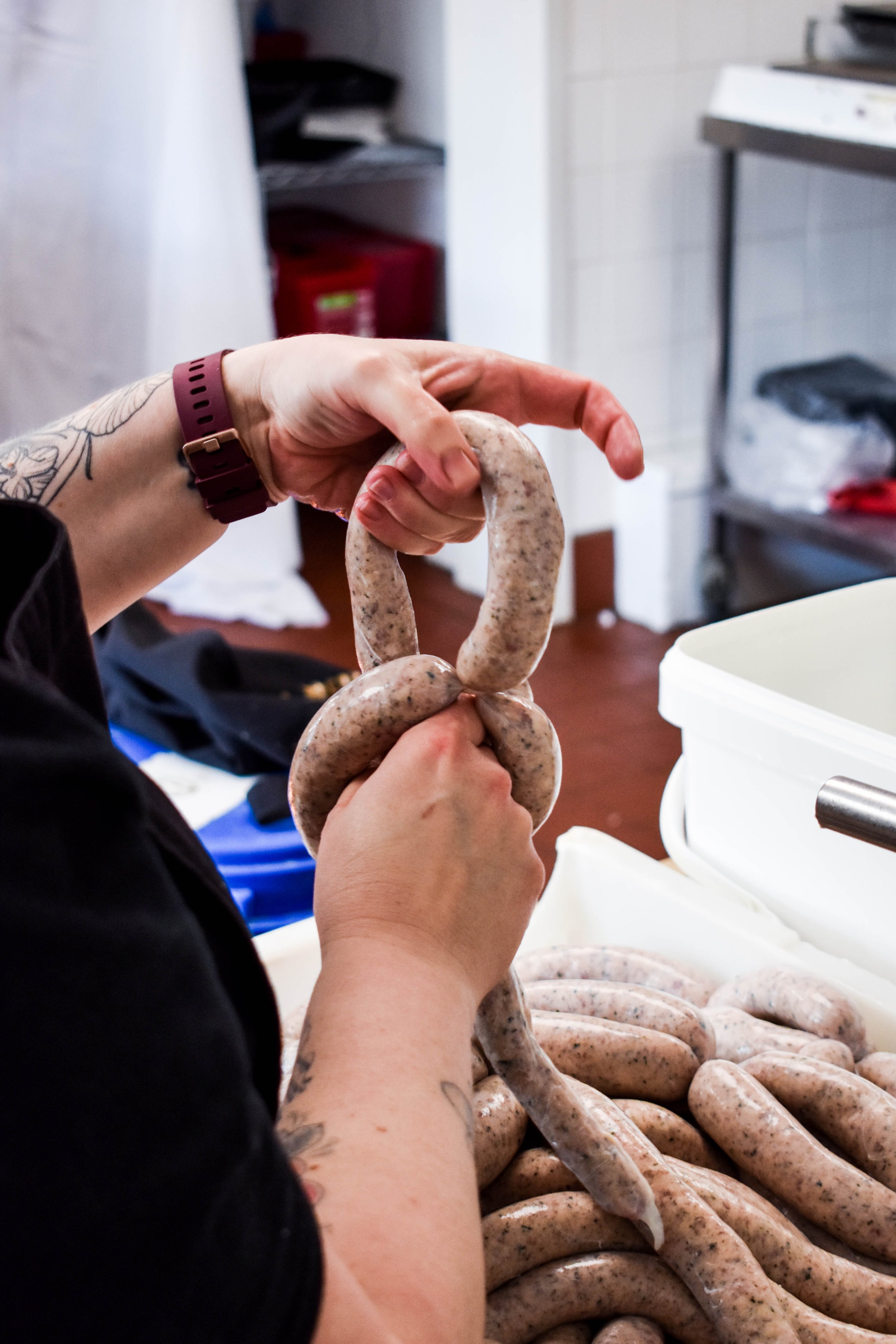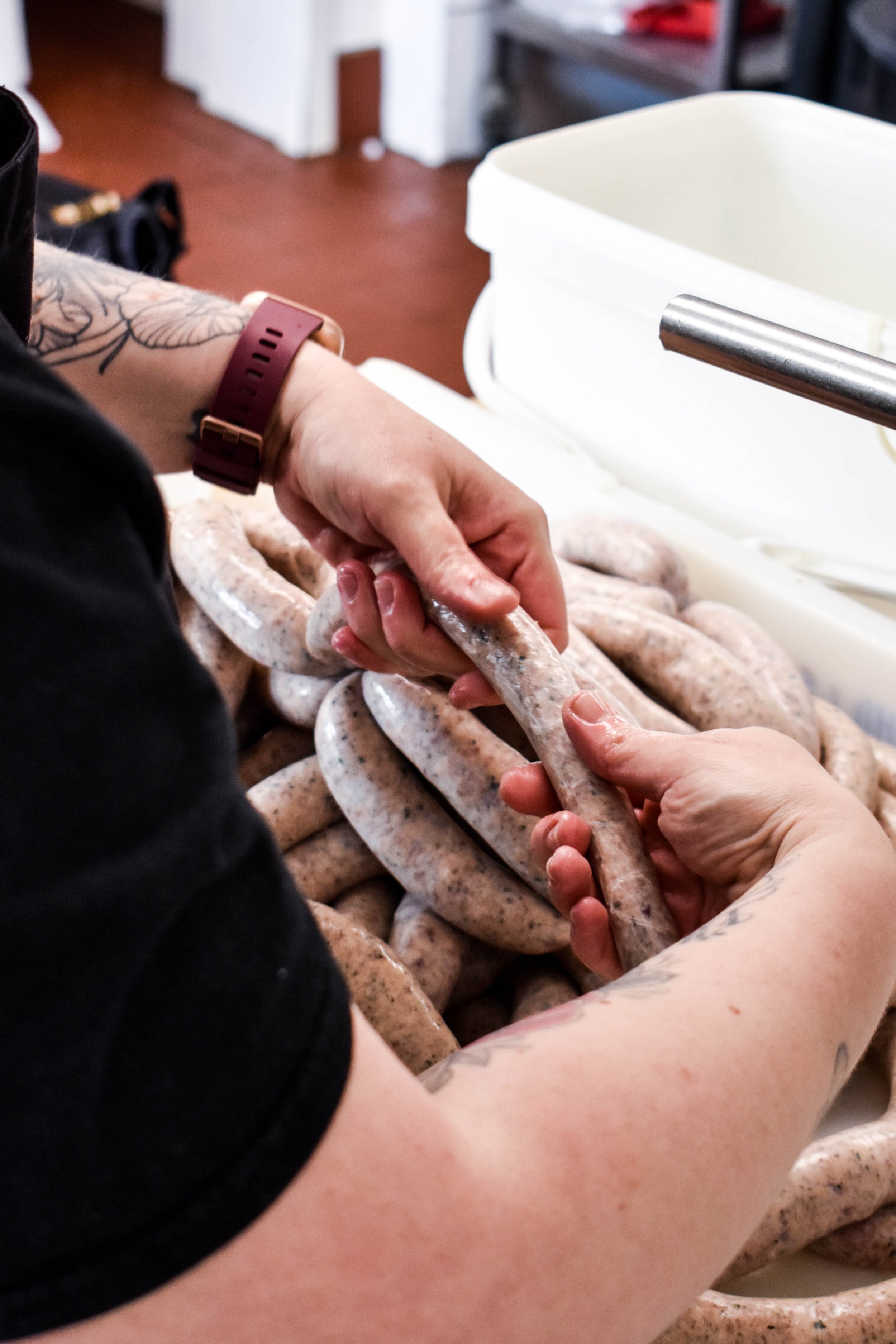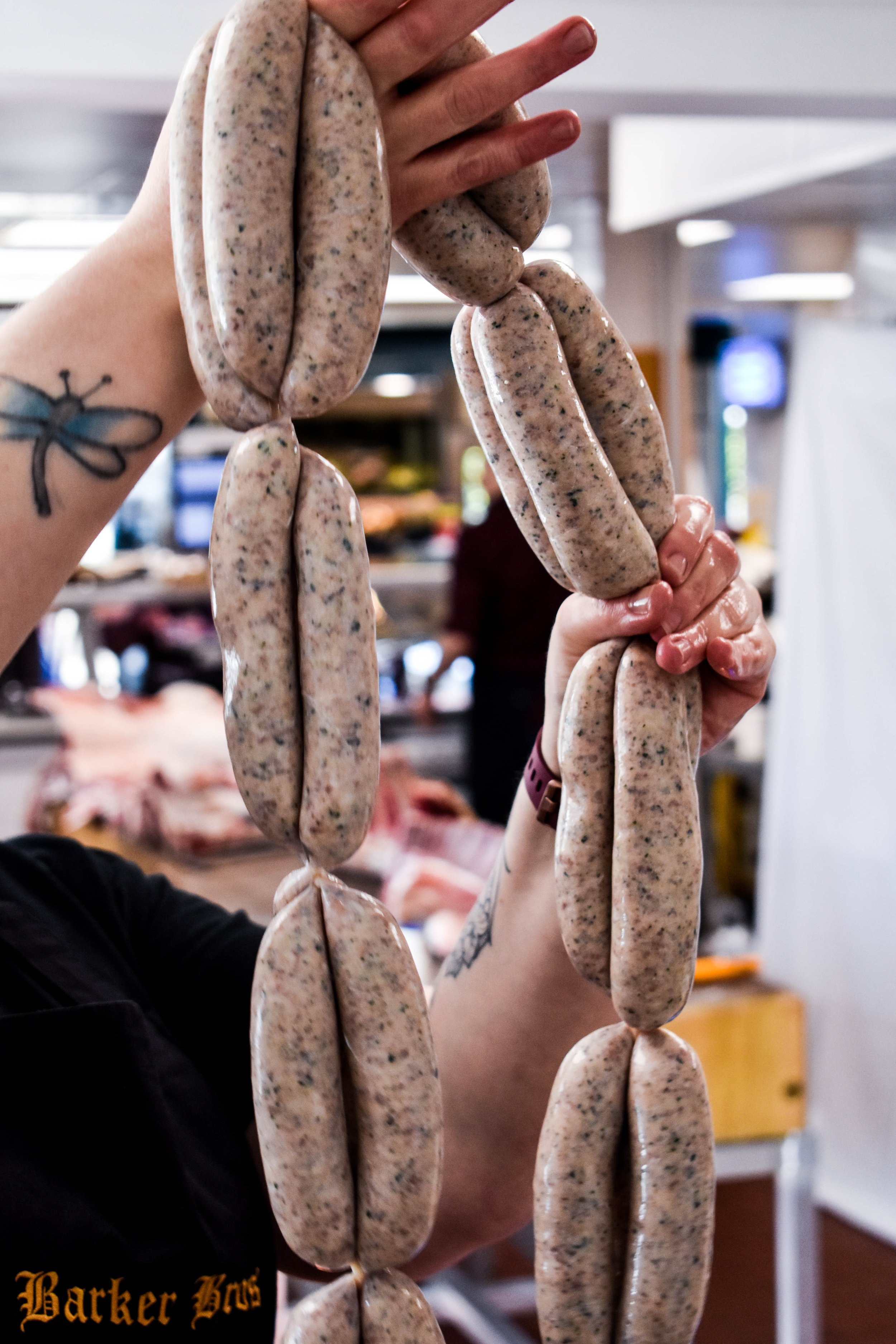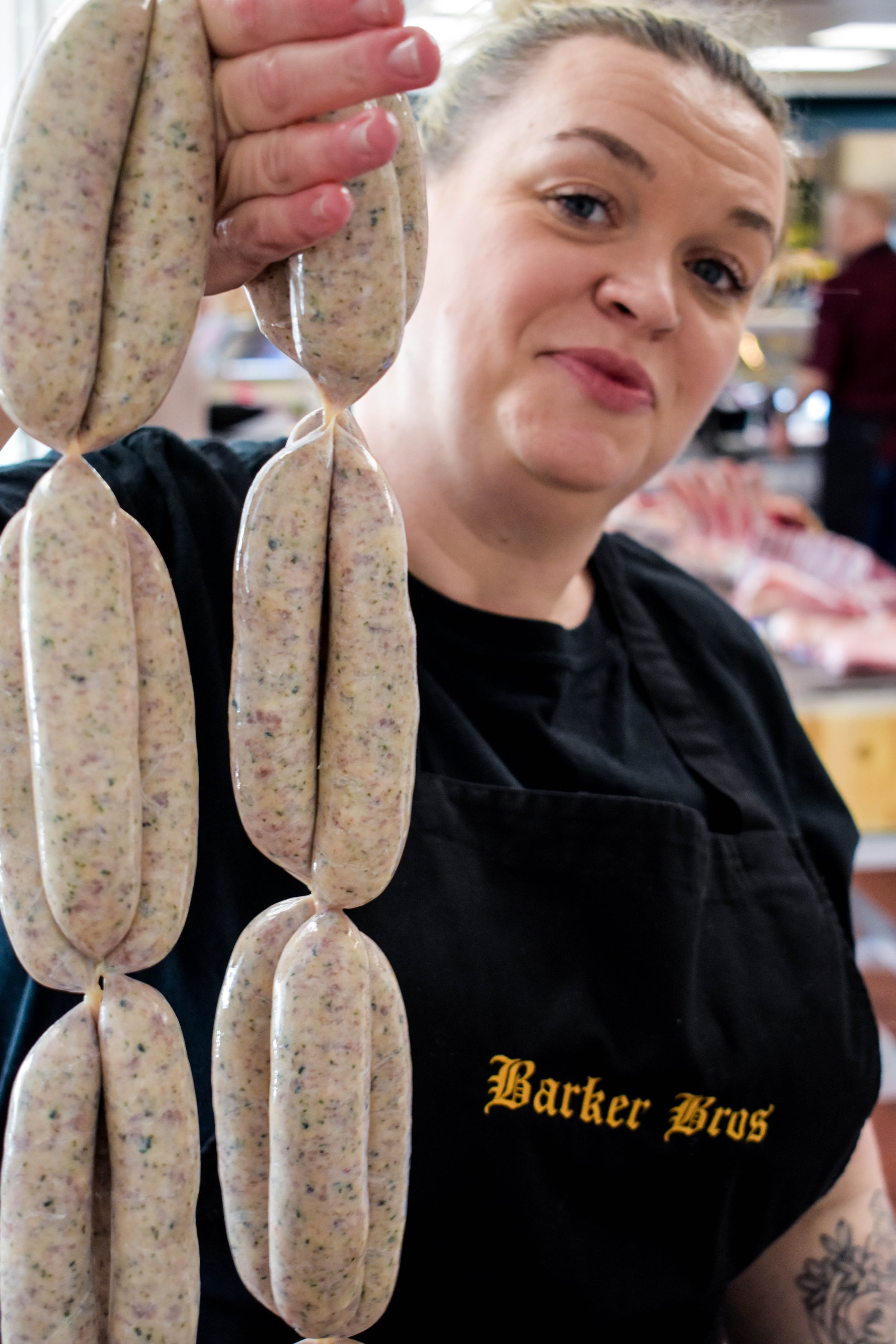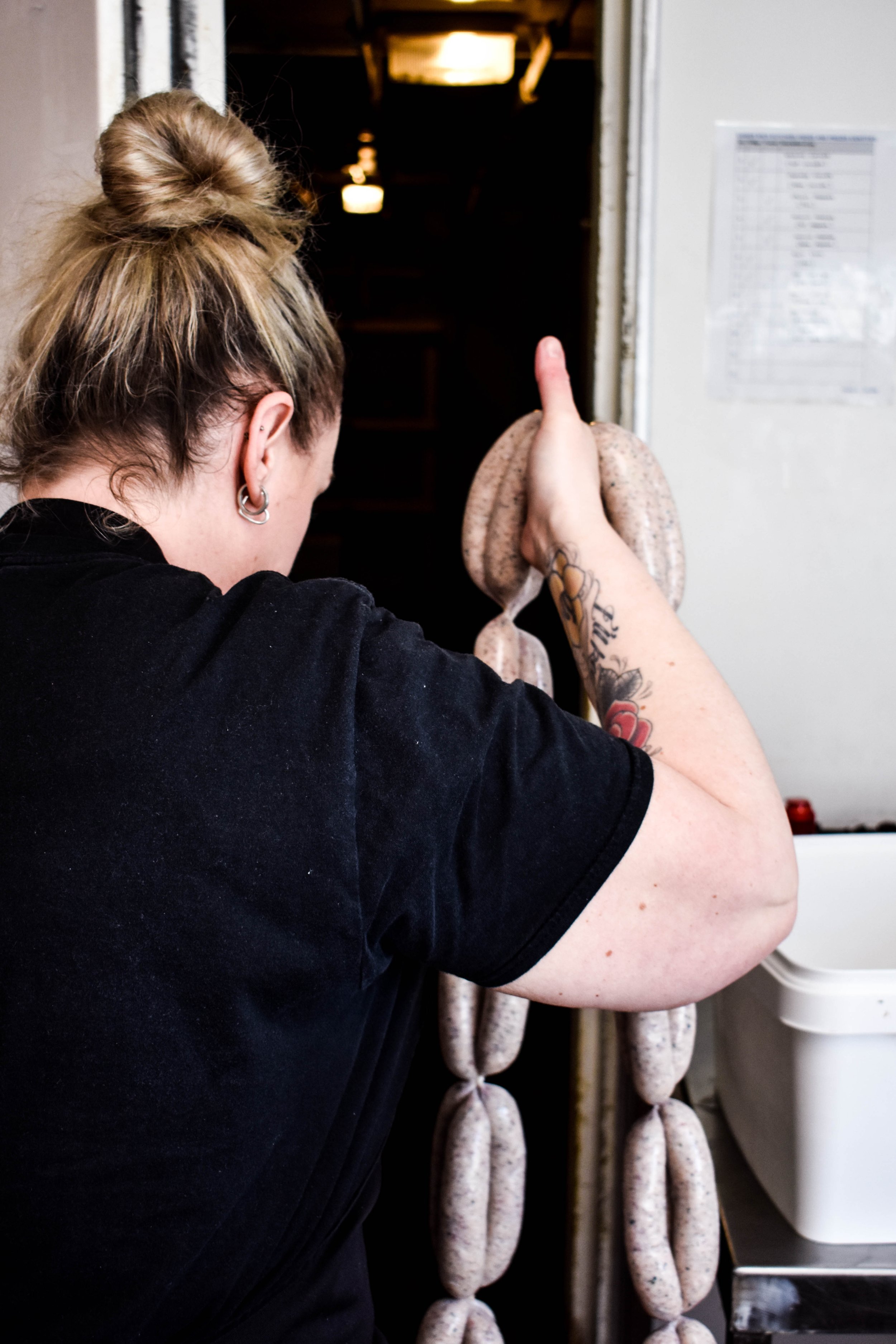Stuart's Guide to the British Banger
The origin of those all encompassing cylinders of meat we call sausages, is like the history of many other foods, not entirely known.
From what we know, it is believed they were being made in the Middle East in the Bronze Age, and proved popular with the Ancient Greeks and Romans. The word sausage derives from the Latin salsisium, meaning something that has been salted, and over the centuries sausage has been adapted to fit climate and cultures across the globe.
Some countries, and indeed butchers, make sausages from cheaper cuts of meat, and pad out the sausage by adding barely, rice, breadcrumbs, rusk or oatmeal to give a cost effective but tasty food. Other countries and cultures select more expensive cuts, have strict rules about processing and disapprove of using anything other than pure meat and spices.
In amongst all these traditions and oddities that emerge in the production of “the sausage”, the ‘British banger’ has its own style and tradition.
We know from you, our lovely customers, that sausages hold a special place in the hearts (and mouths) of Great Shelford and beyond.
A big reason for this is that they were quite often part of childhood and spark memories of family barbecues, rainy weekends and a big breakfast. The fact they are, (and hopefully always will be), a fantastic way to make a quick, easy, family meal has made them a family favourite for generations.
British sausages are generally either fresh or cooked puddings. Characteristically there is a history of adding cereal, originally ground breadcrumbs, more generally rusk nowadays, to a sausage mixture, which gives the British banger it’s softer texture compared to other European varieties.
British sausages have always been linked by hand into bunches, their length determined by the width of the butchers hand and this is how we, here at Barkers Butchers, still make our sausages today.
Broadly British sausages sit in groups, with us, here at Barkers, liking to mix up the blend sometimes - in season don’t forget to check out our Venison sausages for a real winter treat, and our South African style Boerworst to keep you on your spicy toes!
Beef Sausage - usually deep pink in colour, this has a strong meaty flavour. Traditionally very popular in Scotland where sales outstripped pork sausages.
Black Pudding - pork blood, onion, barley and cubes of pork fat are the general ingredients to a black pudding, with herbs more prevalent than spices as a rule. There are regional variations, such as Lancashire’s pudding using celery seed and pennyroyal (see photo)
Cumberland Sausage - a classic coiled sausage the traditional Cumberland sausage contains a minimum of 80% pork.
Faggot - yes this is a sausage and we have them in Winter! An old fashioned sausage pudding made using all the offal of the pig(combining minced pork belly, heart and liver), flavoured with sage or other herbs. Shaped into a patio and wrapped in caul fat, and served baked usually with onion gravy. Originally from the Black Country it is believed they are names after a direct word for a bunch of sticks (see photo)
Lincolnshire sausage - less peppery in flavour than other British sausages, these are coarse-ground and chunky and usually seasoned with a mix of sage, nutmeg, allspice and ginger.
Pork and Leek- although considered to be a Welsh speciality this is wildly sold across the UK as the exquisite combination of the sweetness of leeks contrasts amazingly well with pork. Often in the shop!
Saveloy - a red, smooth-textured, well seasoned, smoked sausage, comparable to a large hot dog. Popular in the North of England, often in fish and chip shops who sell them battered and deep-fried, because why not!
White pudding - known as ‘hogs pudding’ in the West Country of England and ‘mealie pudding’ in Scotland, white pudding is actually most famously associated with Ireland. Made from pork fat, oatmeal, onions and suet, some varieties also contain cooked pork.


